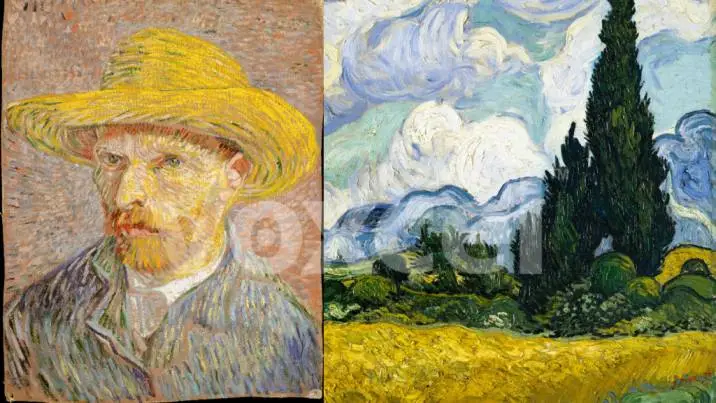- December 09, 2024
7 Ways to Share Your Story on Social Media
- September 06, 2022
- in Podcasts

Content marketing is “A type of marketing that involves the creation and sharing of online material (such as videos, blogs, and social media posts) that does not explicitly promote a brand but is intended to stimulate interest in its products or services”. In other words, explicit marketing is simply saying “buy my stuff!” whereas content marketing is the art of persuading people to do so through storytelling.
Storytelling is important because science has found that it causes the release of Oxytocin in the brain, which is a hormone that is associated with social bonding. This is a powerful tool for social media (and content marketing in general) because it basically means that sharing stories helps build the all-important know, like and trust factor needed to get your ideal clients to support and ultimately buy from you. Looking for ways to incorporate this within your social media strategy? Here are 7 ways to do it:
1. Share your “why”
One of the greatest ways to share your brand story is to share you or your company’s why. You can do this by sharing:
- The mission/vision of your company
- What motivates you in terms of impact
- What made you start or launch your business in the first place
This is a valuable way to share your story because it helps you to form deep connections and build community with an audience that has similar aspirations, goals and core values- thereby allowing you to attract your ideal clients.
2. How it started vs how it’s going
Another great way to share your story would be to do a how it started versus how it’s going post. These kinds of posts are essentially before and after posts, usually in picture form, that do exactly what they say on the tin- show the progress that your company, brand or business has made from where it started to the present day. The caption could then be an extension of the sharing your why method by telling your audience how you started with an idea to achieve a certain goal and how you have made progress towards it since then.
3. Your highlight reel
Progress can also be demonstrated by sharing your successes (otherwise known as your “highlight reel”) such as:
- Positive client testimonials/case studies
- Awards
- Expansion such as new hires, product lines or property/office spaces
- Meeting, hosting or sharing the stage with industry celebrities
- How your business is allowing you to manifest the life you and/or your family have always dreamed of
- Press
You can then incorporate the aforementioned techniques into your storytelling about these achievements by sharing how they tie into your why (the mission, vision and impact that you want to make in the world) or sharing why they mark how far you’ve come in terms of progress. You could also share quotes from others and simply “piggy back” off of them by sharing why you agree or disagree with the quote based on your personal experience.
“Storytelling is the most powerful way to put ideas in the world today.” – Robert McKee
4. Words of Inspiration
One of the things that all 3 of the strategies mentioned above have in common is the fact that they can all be considered inspirational and/or aspirational for your audience. You can take this aspect of storytelling further by sharing words of wisdom such as the lessons that you’ve learned by getting to this point in your journey and making such progress, impact or waves in terms of success. In doing this you not only create brand loyalty, you position yourself as an authority, expert and credible solution to your ideal clients’ problems- making purchasing your paid content a no-brainer.
5. Previous missteps
Thomas Edison is reported to have once said “I have not failed. I’ve just found 10,000 ways that won’t work” when questioned about his missteps. I say this to say that often the lessons that we have learned about the best route to success come from the fact that we learned what not to do first. As such, it’s important to not just share words of inspiration but the missteps that led you there you. These can include (but are not limited to) past failures, poor decisions, mistakes and/or limiting beliefs, and how you overcame them. In so doing, you:
- Humanise yourself
- Become more relatable
- Give your audience hope that if your process worked for you it can work for them too
- Persuade them to buy without being sleazy or pushy
6. Case studies
I mentioned case studies briefly in the highlight reel section but it’s definitely a storytelling tool worth talking about in greater detail. Case studies are the art of telling stories about the efficacy of your products or services but using clients/customers as the main protagonist in the story (rather than yourself). You can do this by talking about the problem that the client/customer had when they first approached you for help, how you helped them and the positive impact that they gained as a result.
Doing this is really powerful because constantly using yourself as a case study could raise scepticism about bias and/or whether or not you can get the same results for others. Using other people as case studies, however, obliterates those objections. Your ideal clients will also identify with the people in the story, see themselves as an ideal candidate for your services or products and will, ultimately, be persuaded to buy from you.
Case studies are also a great tool for non-profit organisations to use as a way of showing how funds are being allocated and making impact in people’s lives. This is will then encourage your current patrons to keep giving and those who are not yet patrons to support your cause.
7. Behind the scenes
The final storytelling strategy to consider using is a behind the scenes (BTS) post. BTS posts typically take the form of a picture or video footage of the day to day background of your business and a caption explaining simply what it is and/or why this is important. Examples include:
- Meetings
- Processes
- PR appearances
- And more
BTS posts are great storytelling tools because they pull back the curtain on your operation and tend to be a more candid representation of your brand, creating a sense of vulnerability and therefore intimacy with your target audience. Depending on what they portray, they can also be inspirational or aspirational as well.
Storytelling is a key content marketing tool, especially when it comes to social media. The better you are at storytelling, the more connected your ideal clients feel to your brand. The more connected that they feel to your brand is the more likely that they will be to invest in your cause, products or services. It is my hope that using the 7 storytelling tools above will help you to see those benefits within your business, just as I have mine.





